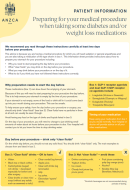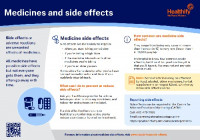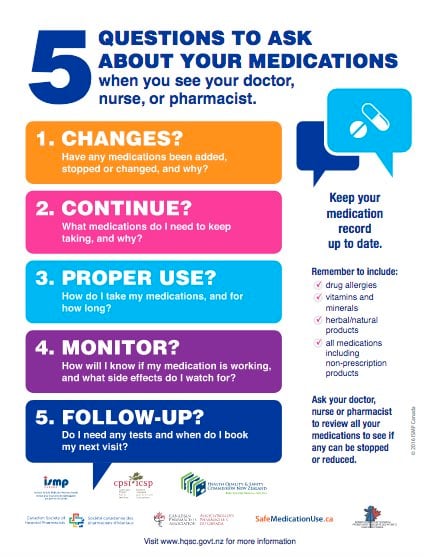Wishing everyone a safe and happy Christmas and New Year – Meri Kirihimete from the Healthify team.
Saxenda
Key points about Saxenda
- Saxenda is used as weight-loss treatment, together with a healthy, balanced diet and regular exercise as part of an overall weight-loss plan.
- Saxenda is also called liraglutide.
- Find out how to take it safely and possible side effects.

Saxenda is a weight-loss treatment that is used together with a healthy, balanced diet and regular exercise as part of an overall weight-loss plan.
- Saxenda works in a similar way to a natural hormone in your body called glucagonlike peptide-1 (GLP-1). This hormone is normally released by your intestines after you eat. It helps control your appetite and how your body uses glucose and fat.
- Saxenda mimics this hormone to help you feel full sooner and eat less, which can lead to weight loss. Saxenda suppresses your appetite by increasing feelings of fullness and reducing feelings of hunger and cravings for food. This can lead to eating fewer calories and losing weight.
Saxenda is available only on prescription
To be prescribed Saxenda, you must meet certain criteria depending on your body mass index (BMI) and other health conditions you may have. BMI is calculated using your height and weight. Learn more about BMI.
- Saxenda is used in adults with a BMI of 30 or more (obese).
- It is also used in adults with excess weight (a BMI of 27 or more) who also have weight-related medical problems such as pre-diabetes, type 2 diabetes mellitus, high blood pressure (hypertension), high cholesterol (dyslipidaemia), or obstructive sleep apnoea.
Note: Saxenda is not funded in New Zealand, which means you'll have to pay for it yourself.
Weight loss medicines are used for weight loss when lifestyle changes such as healthy diet and exercise haven't been successful on their own. A routine of healthy eating and regular exercise can provide lasting weight loss. However, for some people this isn't enough and weight loss medicines may help. Weight loss medicines are not a ‘quick fix’, but a long-term option for managing obesity when combined with healthy eating and exercise. Read more about weight loss medicines.
In Aotearoa New Zealand Saxenda comes in a pre-filled injection pen. Each pen is able to deliver doses of 0.6 mg, 1.2 mg, 1.8 mg, 2.4 mg or 3.0 mg.
- The usual starting dose is 0.6 mg once a day.
- Your healthcare provider will tell you how long to keep taking this dose. It will be for at least 1 week.
- Your dose may then be increased by 0.6 mg each week until you reach the recommended dose of 3 mg once a day.
Your healthcare provider will tell you how much Saxenda to use each week. The following is a guide.
- Week 1: 0.6 mg once a day.
- Week 2: 1.2 mg once a day.
- Week 3: 1.8 mg once a day.
- Week 4: 2.4 mg once a day.
- Week 5 onwards: 3 mg once a day.
With Saxenda treatment weight loss usually starts within 2 weeks and continues for 9 to 12 months.
Your healthcare provider will show you how to use Saxenda. The following is a guide.
Prefilled pen
Saxenda is a pre-filled, dial-a-dose pen. This means that the pen contains an amount of medicine already loaded (18 mg of liraglutide). Depending on the dose you dial, it can deliver amounts of 0.6 mg, 1.2 mg, 1.8 mg, 2.4 mg and 3 mg.
Time of day
A Saxenda injection is given once a day. You can use Saxenda at any time of day, with or without food. It's best to inject Saxenda at about the same time each day, at a time that is most convenient for you.
Needles
Saxenda pre-filled pens are designed to be used with NovoFine® needles of up to 8 mm long. Needles are not included with the pen. Ask your doctor or nurse which needle width (gauge) and length is best for you. Use a new needle for each injection and dispose of it after use.
Injection site
Saxenda is given as an injection under your skin (subcutaneous injection) as shown to you by your doctor or nurse. Saxenda may be injected into the front of your waist (abdomen), the front of your thigh or your upper arm. Don't inject Saxenda into a vein or muscle.
Missed dose
If you miss a dose of Saxenda and the next dose is less than 12 hours away, skip the missed dose and carry on as normal. If it's more than 12 hours until the next dose, take the missed dose as soon as you remember. Don't take 2 doses at the same time.
For more information on how to use the Saxenda pen, see the Medsafe consumer information sheet on Saxenda(external link) or watch this video(external link).
Here are some things to know when you're using Saxenda. Other things may be important as well, so ask your healthcare provider what you should know about.
Drink enough water to avoid dehydration
When starting Saxenda, it can cause nausea (feeling sick), vomiting (being sick) and diarrhoea (runny poo) that can last for a few days. This increases your risk of dehydration, which can cause serious kidney problems. Be sure to drink plenty of water or non-sugary beverages. Avoid alcohol, as it can affect your blood glucose. Contact your healthcare provider if you have nausea, vomiting and diarrhoea or get symptoms of dehydration such as headache, feeling lightheaded or dizzy, weakness, feeling very tired, no energy and peeing (urinating) less than usual.
If you are unwell
Saxenda doesn't usually cause problems if you're slightly unwell, but if you're dehydrated from vomiting and diarrhoea and not eating and drinking as usual, you can delay the next injection until you're better. Talk to your healthcare provider if you have any questions.
Taking other medicines
Saxenda interacts with some medicines, herbal supplements and rongoā Māori, so check with your healthcare provider before starting Saxenda and before starting any medicines, vitamins or supplements that you buy without a prescription from your pharmacy, supermarket or health food shop.
Before having surgery or a medical procedure
Saxenda can slow down the emptying of your stomach and may increase the chance of food or liquid getting into your lungs during surgery or other procedures that use anaesthesia or deep sleepiness (deep sedation). Tell your healthcare provider you're taking Saxenda before you have surgery or a medical or dental procedure. Read more about preparing for your medical procedure when taking some diabetes and/or weight loss medicines.(external link)
Pregnancy and contraception
If you're pregnant, think you may be pregnant, or are planning to have a baby, ask your healthcare provider for advice as Saxenda is not recommended during pregnancy.
Research has found that weight loss may increase the likelihood of some women returning to normal ovulation. If you're sexually active and don't want to become pregnant, you should use effective contraception to avoid unplanned pregnancy. Read more about contraception.
How to store Saxenda
- Before opening: Store Saxenda in the fridge, in the original package. Do not freeze. If your pen has been frozen, don't use it.
- During use: You can keep the pen for 1 month when stored at room temperature (below 30°C) or in a refrigerator (2°C to 8°C). Don't freeze it.
When you're not using the pen, keep the pen cap on to protect it from light.
Get rid of your used needles safely
It's important to get rid of your used needles safely. Keep them out of reach of children and pets, and places where they could hurt others.
- You can do this by buying a sharps container from your pharmacy. This is a special container made of hard plastic that has a tight-fitting lid so used needles and syringes can be stored securely.
- Don't flush used needles down the toilet or put them in household or public rubbish or recycle bins.
- Once your sharps container is full, take it to your pharmacy for safe disposal. Read more about safe disposal of needles.
Ongoing support when taking weight loss medicines
Managing obesity is about losing weight and focusing on building healthier habits, managing related health issues, improving quality of life, and supporting emotional wellbeing. Having a personalised plan tailored to your needs can be a helpful tool to support you on your weight loss journey. Learn more about ongoing support when taking weight loss medicines.
Like all medicines Saxenda can cause side effects, although not everyone gets them. If you're concerned about any symptoms you think might be related to your medicine, talk to your healthcare provider. The following information offers some guidance but doesn't include all possible side effects.
Common side effects
Tell your healthcare provider if any of these side effects bother you.
- Nausea (feeling sick), diarrhoea (runny poo), constipation, indigestion, gas or bloating: If you have diarrhoea or are dehydrated, delay your next dose until you feel better and are eating and drinking normally.
- Tiredness, headache, dehydration, feeling thirsty: Make sure you're drinking enough water. If you're dehydrated, delay your next dose until you feel better and you're eating and drinking normally.
- Reaction at the injection site such as bruising, redness, tenderness: Remember to change the injection site every day. You can use the same part of your body but try not to use exactly the same spot. Avoid injecting Saxenda cold, because it's more likely to sting.
Tell your healthcare provider immediately or phone Healthline free on 0800 611 116 if these occur
- Changes in mood, behaviour or thoughts.
- Signs of problems with your pancreas such as severe pain in your stomach (tummy area) and your back, as well as nausea and vomiting.
- Palpitations (fast heart beat), feelings of a racing heartbeat when resting.
- Signs of a goitre (swollen thyroid gland) such as a lump or swelling in your neck, hoarseness, trouble swallowing, or shortness of breath.
- Signs of gall bladder problems such as pain in your abdomen (tummy area), yellow skin and eyes or light coloured poo.
- Signs of kidney problems such as peeing less than usual, a metallic taste in your mouth and bruising easily.
Phone 111 for an ambulance or go to your nearest accident and emergency (A&E) clinic if these occur
- Signs of an allergic reaction such as itchy skin, and rash, swollen lips or tongue, problems breathing, like a tight chest or shortness of breath.
Read more about medicines and side effects and reporting a reaction you think might be a side effect.
The following links have more information on Saxenda:
Saxenda(external link) Medsafe Consumer Information Sheet, NZ
Saxenda(external link) Novo Nordisk
Brochures
Medicines and side effects [PDF, 91 KB] Healthify He Puna Waiora, NZ, 2024
5 questions to ask about your medications(external link) Health Quality and Safety Commission, NZ, 2019 English(external link), te reo Māori(external link)
Apps/tools
References
- Liraglutide(external link) NZ Formulary
- Weight loss – the options and the evidence(external link) BPAC, NZ, 2019
- Glucagon-like peptide-1 receptor agonists – stay hydrated(external link) Medsafe Prescriber Update, NZ, June 2025
Brochures

Preparing for your medical procedure when taking some diabetes and/or weight loss medications
Australian and New Zealand College of Anaesthetists

Medicines and side effects
Healthify He Puna Waiora, NZ, 2024

Health Quality and Safety Commission, NZ, 2019 English, te reo Māori
Credits: Sandra Ponen, Pharmacist, Healthify He Puna Waiora. Healthify is brought to you by Health Navigator Charitable Trust.
Reviewed by: Angela Lambie, Pharmacist, Auckland
Last reviewed:





